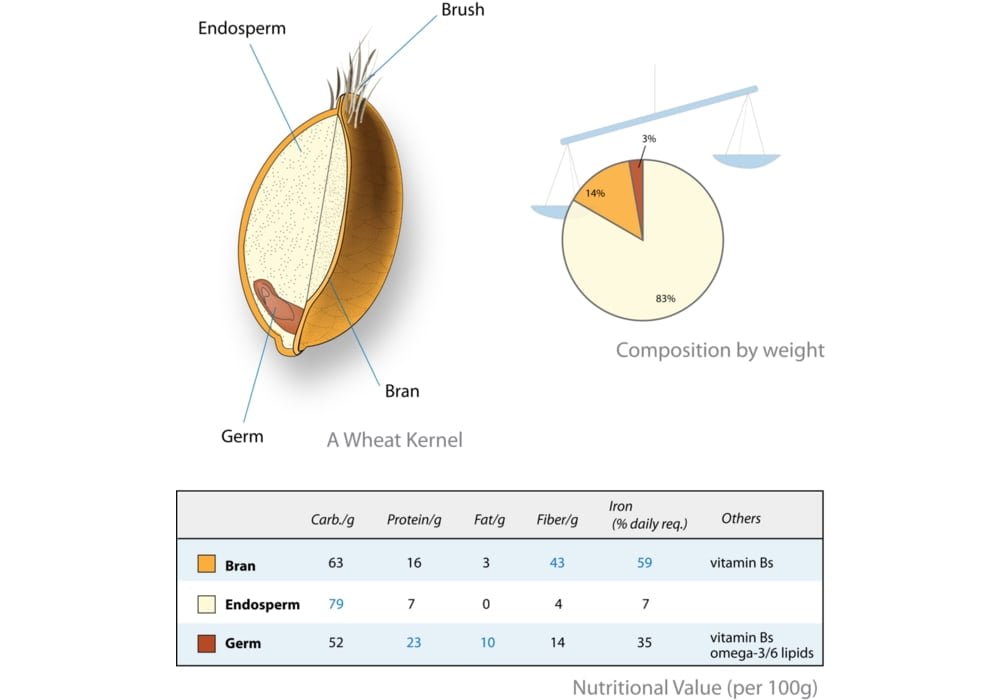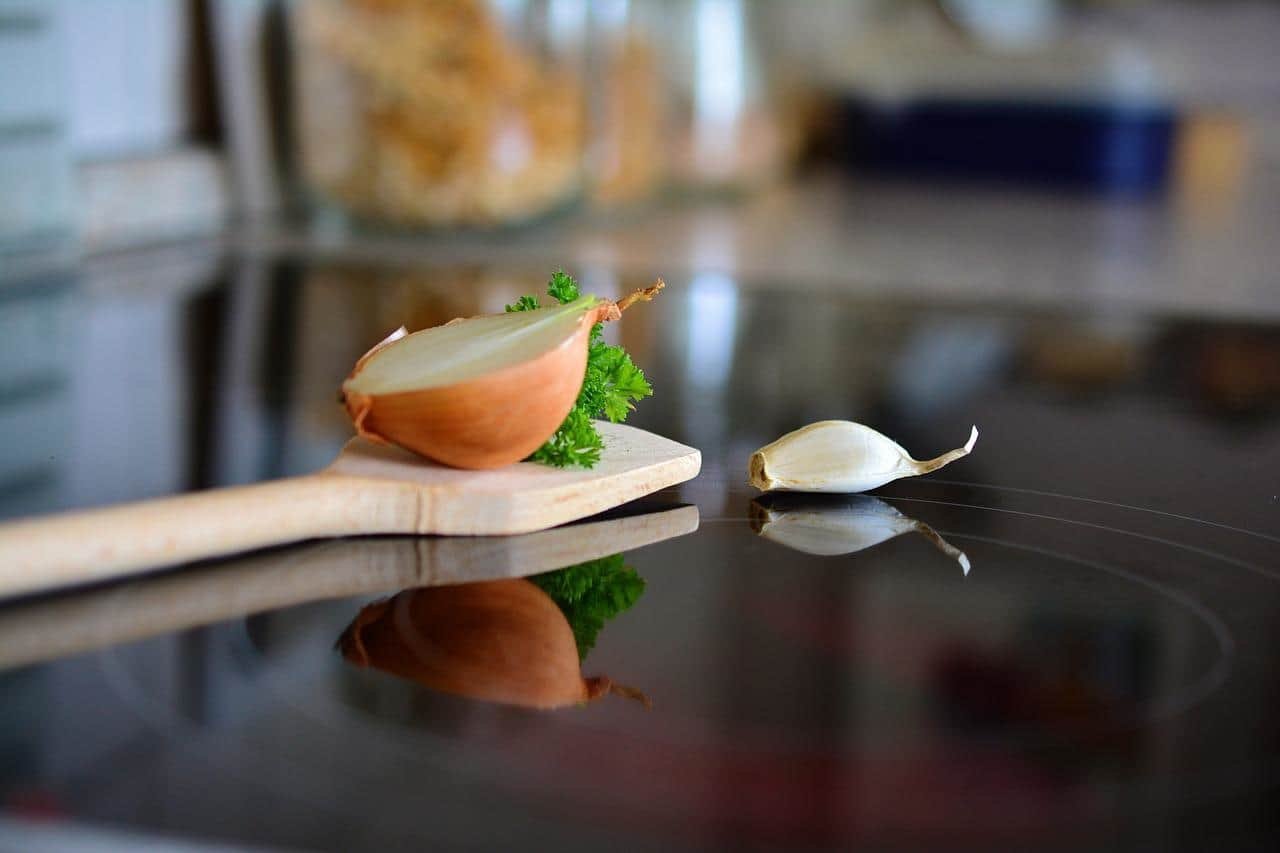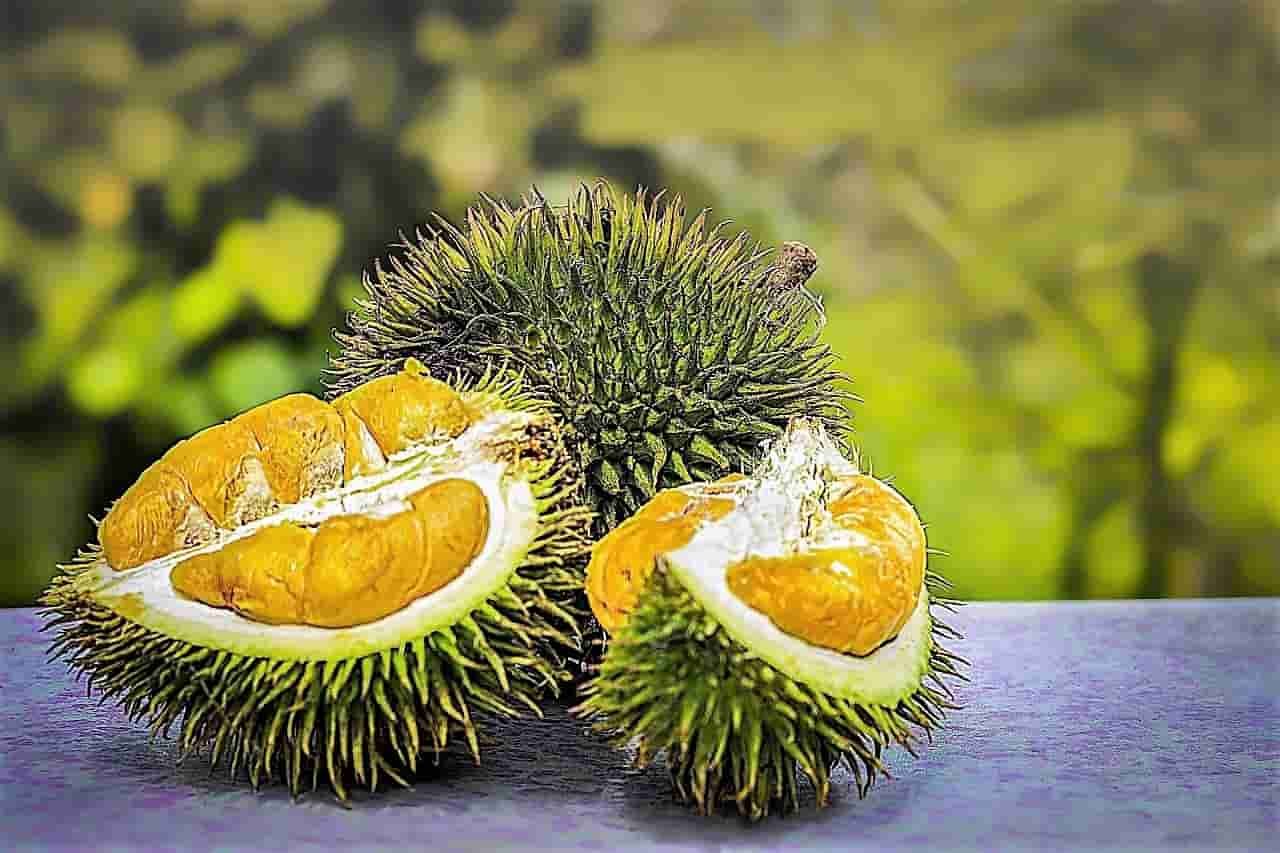Why are whole grains better for you than refined grains?
It is very simple! Whole grain have 3 components:
Bran (outer layer)
The germ (heart of the grain)
The endosperm (between the outer layer and the core of the grain)
In refined grains, only one component remains: only endosperm
The most nutritious elements are in the bran and the germ (insoluble fiber, protein, minerals, B vitamins, E vitamins, good fats, antioxidants, phytonutrients).
The endosperm contains mostly carbohydrates, proteins and some vitamins, which makes it less nutritious than whole grains.
Refined grain is the term used to refer to grains that are not whole, because they are missing one or more of their three key parts (bran, germ, or endosperm). White flour and white rice are refined grains, for instance, because both have had their bran and germ removed, leaving only the endosperm. Refining a grain removes about a quarter of the protein in a grain, and half to two thirds or more of a score of nutrients, leaving the grain a mere shadow of its original self.
What is whole grain product?
Whole grain products are made with the whole kernel of grain. The bran (the outer layer) contains the largest amount of ber (insoluble), B vitamins, trace minerals and a small amount of protein; the endosperm (middle layer) contains mostly protein and carbohydrates along with small amounts of B vitamins, iron and soluble ber; and the germ (inner part) is a rich source of trace minerals, unsaturated fats, B vitamins, antioxidants, phytochemicals and a minimal amount of high quality protein.
7 examples of the health benefits of whole grains:
Reduced risk of colorectal cancer
Reduced risk of developing type 2 diabetes
Maintaining good blood pressure
Decreased cholesterol level
Increased feeling of fullness
Better digestion and bowel regularity
Decreased inflammation (the cause of many chronic diseases)
What is a serving of whole grain?
1 slice of bread
2 cups of plain popcorn
½ cup of rice or pasta
Whole grains for the gluten intolerant
Whole grains can be separated into 2 categories:
Grains from cereals (e.g. wheat, spelled, kamut, bulgur, couscous, rye and barley)
Seeds from other plants (e.g. amaranth, corn, millet, quinoa, rice, buckwheat, sorghum, and teff)
Whole grains of the first category contain gluten, while those of the second category do not.
When it comes to oats, it has long been believed to contain gluten when in fact it has been shown that it is the surrounding crops that often contaminate it. We now know that people with gluten intolerance can eat oats in small amounts without a problem.
Read also ? Gluten free diet | What can you eat on a gluten free diet?
Whole Grain Health Effects
Several studies have already demonstrated the benefits of whole grain consumption on heart disease, hypertension and diabetes, the researchers point out. Studies also suggest a positive effect of soluble fiber (present in large quantities in oats), on the reduction of cholesterol. However, the study could not verify this hypothesis since it does not include patients with significant hypercholesterolemia, they indicate.
Other biochemical factors, such as the concentration of glucose or insulin, have not been shown to be conclusive. The same goes for the amounts of vitamins and minerals consumed, which were more or less the same in the 3 groups.
Great health benefits
People who eat 3 or more servings of whole grain foods per day are 30% less likely to have heart disease than those who rarely eat whole grains. Plus, whole grains can help lower cholesterol levels and the risk of stroke. These are huge benefits from these succulent foods!
When the grains are processed or refined, the bran and germ are removed, eliminating most of the fiber, B vitamins, vitamin E, trace minerals and antioxidants at the same time. Among the refined grains are white rice and white flour.
Example Whole Grain Varieties
Sources of whole grains include:
Cereals
A cereal is any grass cultivated (grown) for the edible components of its grain (botanically, a type of fruit called a caryopsis), composed of the endosperm, germ, and bran.
Examples:
Wheat (spelled, emmer, engrain, hedgehog wheat, kamut, durum wheat)
Rice (varieties of black, red and other colored rice but not white rice which is rice without bran)
Barley (hulled but not pearl)
But
Rye
Oats (including bare oats)
Minor cereals
A minor cereal cultivated primarily in northern regions. Buckwheat is considered a cereal, although it does not belong to the gramineous family. A minor cereal, which tolerates high altitudes, quinoa is cultivated primarily in Andean countries. Used for food and to make chicha, a fermented beverage. The importance of a minor cereal in West Africa where it is eaten in place of rice during famines. The seeds are cooked by steaming the whole grain.
Examples:
Mils of which
Fonio
Sorghum
Black fonio
Common millet
Asian millets
Teff
Triticale
Canary Islands grass (canary seed)
Tears of work
Wild rice
Pseudo-cereals
A pseudocereal is one of any non-grasses that are used in much the same way as cereals (true cereals are grasses). Their seed can be ground into flour and otherwise used as cereals.
Examples:
Amaranth (Love-lies-bleeding, red amaranth, Prince-of-Wales-feather)
Quinoa
Buckwheat
Chia
Sources: Health Line, Harvard, Science Direct
Photo credit: Wikimedia Commons
Photo explainations: A wheat kernel and its nutritional value. Data sources Illustration and composition of wheat kernel is based on (and simplified from) Berghoff (1998). A kernel of wheat, sometimes called the wheat berry, the kernel is the seed from which the wheat plant grows. Each tiny seed contains three distinct parts that are separated during the milling process to produce flour.



